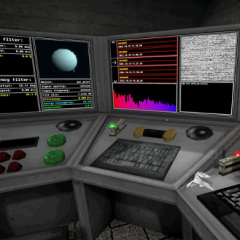Side Effects
Side Effects introduces players to a setting where decision-making under pressure is central to the experience. The gameplay revolves around a series of rounds in which each participant selects a pill card. The results of each selection are unknown until revealed, creating a loop of risk and reward. Some pills restore stability, others introduce complications, and a few can be immediately fatal. Every round adds tension as resistance levels decrease, and options become riskier over time.
Strategy Built on Uncertainty
Success in Side Effects depends on a player’s ability to adapt to unpredictable outcomes. Each participant manages a resistance meter that reflects how many adverse effects they can withstand before elimination. As the rounds go on, players can choose to use special items that may delay or counteract the negative effects of pills. Knowing when to take a risk or play it safe becomes more important than luck alone, especially in competitive matches.
Key Gameplay Elements
Side Effects features include:
· A turn-based structure centered around pill selection
· A resistance meter that determines a player’s health state
· Randomized pill effects that create varying outcomes
· Optional modifiers that change the impact of choices
· Modes that support single-player, versus, and freeplay
These mechanics support a mix of calculated strategy and spontaneous reactions.
Design and Play Modes
The visual style of the game is minimalistic, helping keep focus on player decisions rather than distraction. Menus and interfaces are clean, and effects are communicated through clear indicators. Whether playing against AI or another player, rounds are fast-paced and driven by high-stakes choices. There is also an endless mode for players who want to experiment without a fixed objective, allowing for longer sessions and pattern recognition.
Replay and Psychological Tension
Each game session in Side Effects plays out differently due to the random nature of pill outcomes. While the mechanics are simple on the surface, repeated play reveals deeper layers of timing and prediction. The presence of another player, especially in local or online matches, adds a layer of psychological tension—each decision might be a bluff, a trap, or a desperate attempt to stay alive one more turn. With its quick format and flexible rules, the game offers frequent replay with different results each time.














































